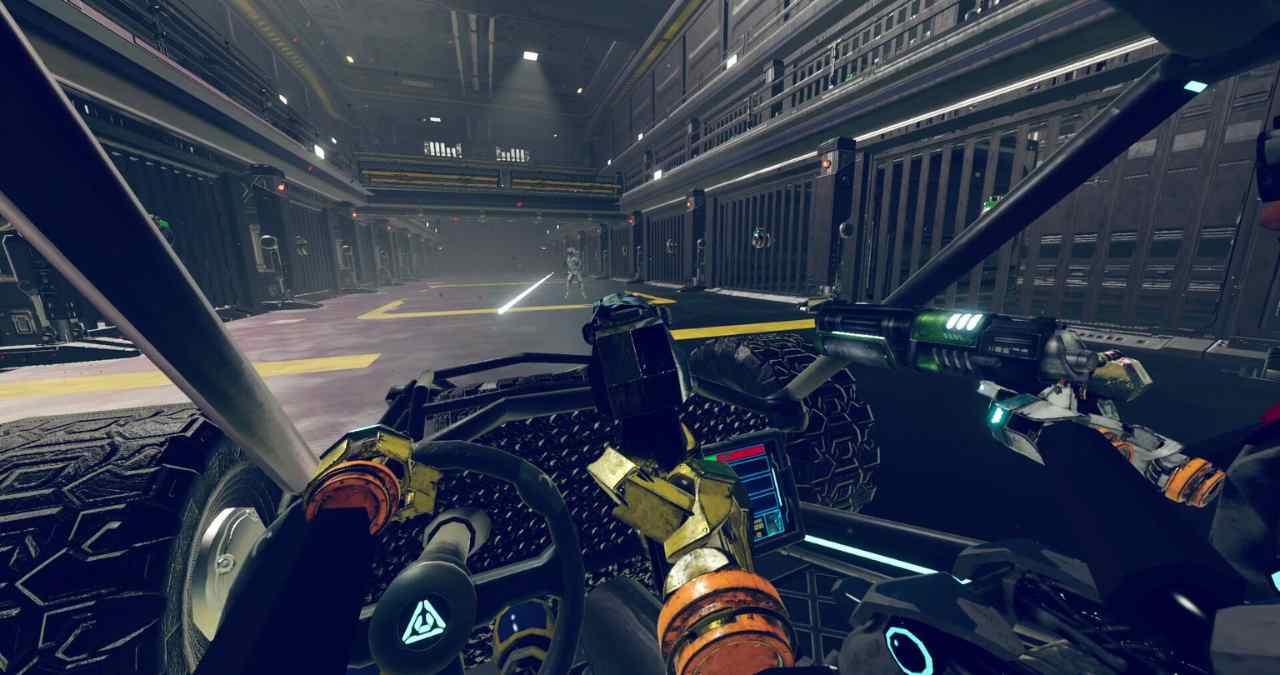Echo Wars is gearing up for release on August 21, bringing a hybrid of driving mechanics and VR shooting to PC platforms. Rather than going full arcade or hyper-realistic, the game aims for something in between accessible speed, grounded action, and short-session intensity.
At a glance, it looks like a futuristic combat sim wrapped in a VR-native format. But underneath the aesthetic is a control system designed for comfort and replayability, with weapons, vehicles, and maps all tuned to support competitive scenarios without overloading motion sensors.
Gameplay Blends Vehicle Handling With Active Shooting
The core loop in Echo Wars revolves around piloting customizable vehicles through open arenas while engaging in combat. Players drive, aim, and shoot from within the vehicle’s cockpit, combining familiar VR interaction with moment-to-moment tactical decisions.
Rather than forcing full-body movement or complex gestures, the game focuses on keeping the hands busy and the screen readable. This creates a smoother experience for players with varied VR setups, especially in longer matches. It’s less about acrobatics, more about positioning and timing.
Arena-Style Maps With Mobility as a Weapon
Maps are built around verticality and open space. Some sections push speed, others demand sharp angles and weapon awareness. Terrain design encourages flanking, hit-and-run tactics, and choke point control—not just brute force.
That gives each match a layered feel, even with small lobbies. Victory often depends on how well players use the map, not just which weapons they bring in. It’s more about staying mobile and smart than locking down high DPS.
Visual Style Keeps Things Readable in Motion
Echo Wars doesn’t lean into photorealism. Instead, it adopts a stylized, high-contrast look that emphasizes clarity over texture detail. Vehicles are angular, with exaggerated silhouettes that make them easier to read at high speeds. Effects are punchy but not overwhelming.
This is a smart move for a VR game with driving mechanics. It keeps player focus intact during motion-heavy sequences and helps reduce the visual noise that often leads to fatigue or nausea in similar titles.
VR-First Design With Motion Sensitivity in Mind
Everything about Echo Wars feels calibrated for motion comfort. The cockpit view limits disorientation. Inputs are responsive without forcing unnatural gestures. Even the pacing avoids wild camera swings or prolonged visual blur, which is key for keeping gameplay tight.
There’s no sign yet of cross-platform play or non-VR modes. The build is clearly designed for headset use, likely prioritizing control precision and comfort over wider accessibility. It may not chase the largest audience, but it’s built to respect the one it’s targeting.
A Focused Take on Multiplayer VR Combat
Echo Wars doesn’t look like it’s trying to compete with massive battle royales or open-world PvE games. Instead, it fits into a growing category of smaller-scale, skill-based VR shooters with streamlined match flow and tactical depth.
For players looking for something that combines movement, vehicles, and sharp VR combat without overwhelming systems or stamina drains, this could land in that sweet spot between novelty and staying power. August 21 will show if that balance holds up once the matches start.
Virtual Reality Explorer & Game Reviewer
Always the first to plug in. VRSCOUT dives head-first into the most immersive VR worlds, analyzing mechanics, comfort, innovation, and that elusive “presence” factor. If he says it’s worth it, it probably is.




